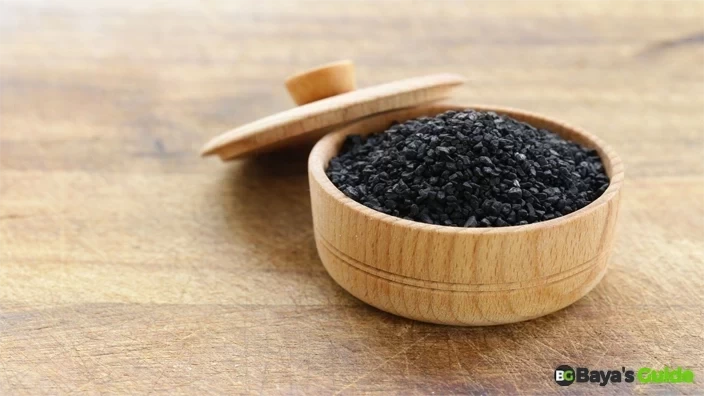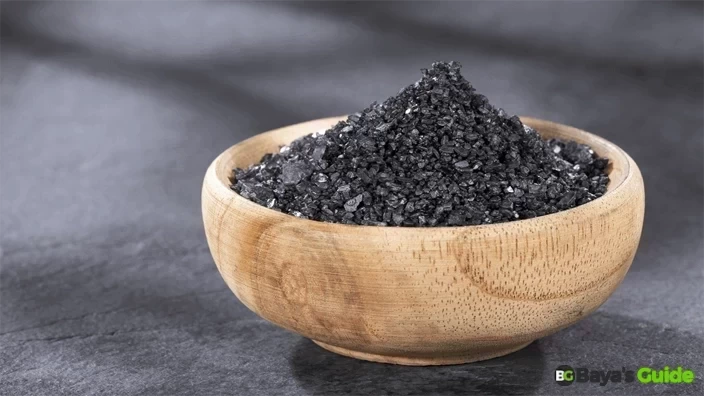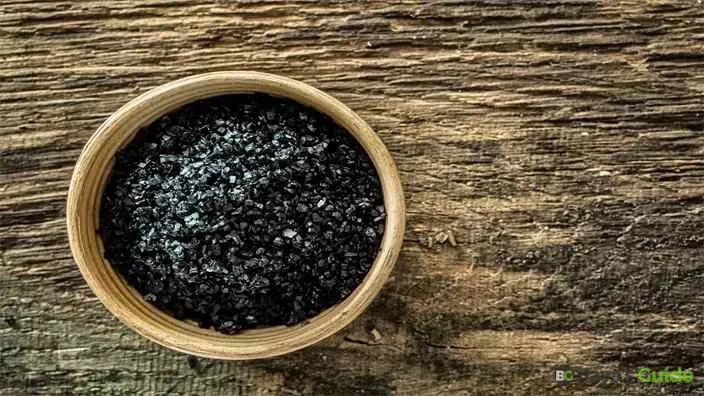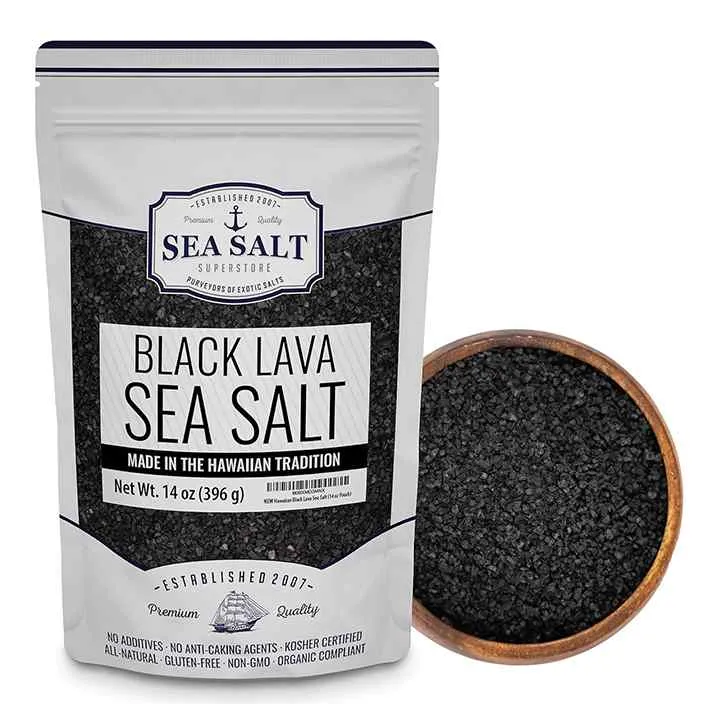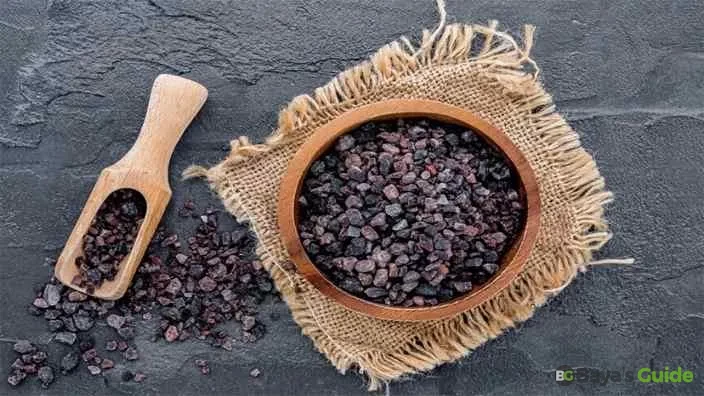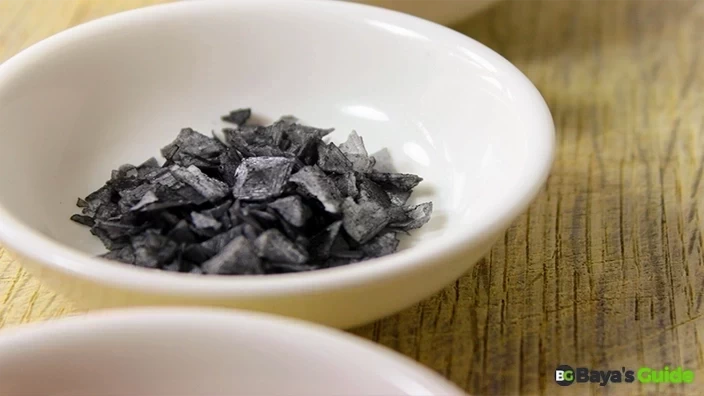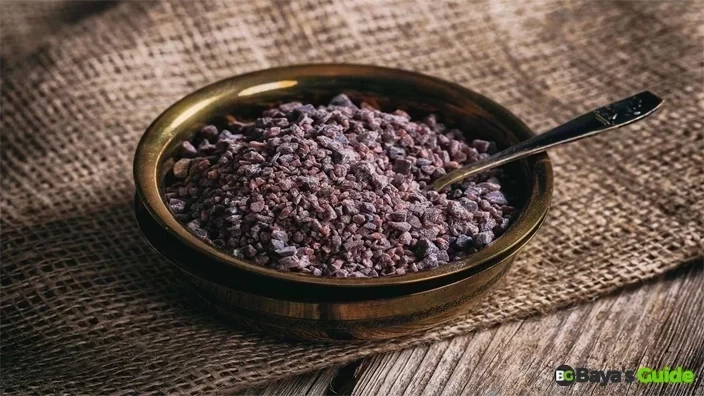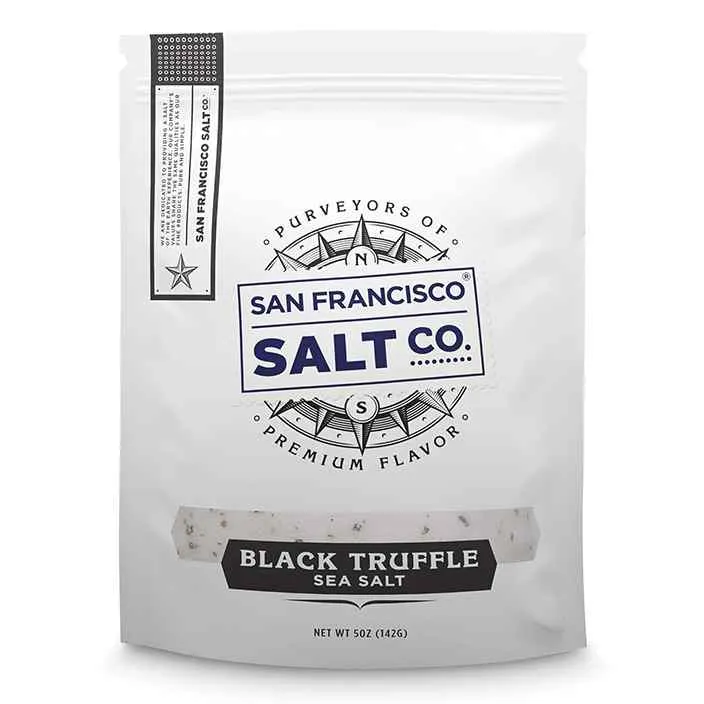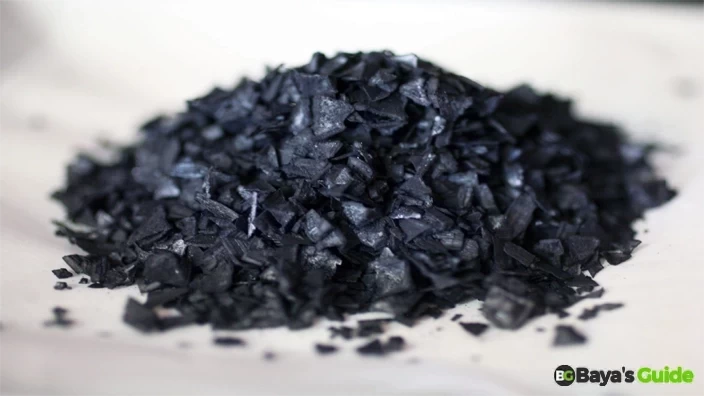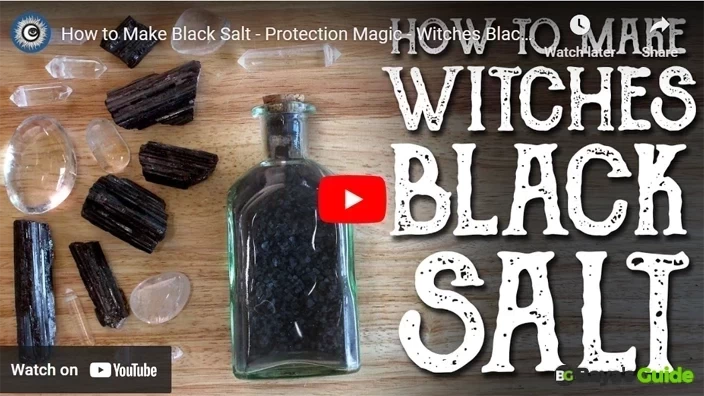Are you prepared to take your culinary journey to a higher level? Bye-bye to boring dishes and a hi to a sparkle spice with homemade black salt! This amazing yet basic ingredient will revolutionize cooking and will add a pinch of mystery to your favorite meals. Visualize a touch of dark allure to your roasted vegetables, grilled meats, and homemade popcorn. If you are a person with a passion for cooking, making your own black salt will add a touch of mystery to your meals.
People sprinkle black salt at the corners of their homes to attract good luck and get rid of negative negativity. They use it for hair or fingernail clippings, cast iron shavings, cast iron cauldron shavings, and other rituals as well.
Considering the beneficial use of this weird pinkish gray color salt, many seek ways to make black salt at home. Here, we will explore simple recipes on how to make black salt!
Table of Contents
- What Is Black Salt?
- Types Of Black Salt
- Hawaiian Black Lava Sea Salt|Black Salt For Cooking Or Cocktails|Sal Negra|14 oz Bag
- Making Of Black Salt
- Process Of Making Black Salt
- Black Salt Alternatives
- Black Salt - Pros & Cons
- Italian Black Truffle Salt 5 oz With Resealable Pouch
- Uses Of Black Salt
- Difference Between Black Salt & Table Salt
- Frequently Asked Questions
- Conclusion
What Is Black Salt?
Black salt, also known as kala namak in Hindi, is primarily found in India, Pakistan, Bangladesh, and Nepal. It's a kiln-fired, highly mineralized salt that is typically mined from deep underground mines. Black salt is also known as protection salt, as its protective qualities help you avoid negativity and evil. About color, it isn't actually black but has a distinctive pinkish-gray to purple color when ground into a fine powder form. In India and Pakistan, people use the salt for other purposes as well. In these countries, after a visitor leaves and people sense negative energy, they sprinkle a pinch of salt to help clear away the bad vibes.
This striking color of magical black salt is attributed to its sulfur content and a variety of iron and other trace minerals. The use of black salt is often taken to mimic the taste of eggs in various dishes, such as tofu scrambles and vegan omelets. Beyond its egg-like flavor, black salt is also employed in traditional Indian recipes like chaats, chutneys, and raitas.
Types Of Black Salt
There are several types of black salt, each with its own characteristics and culinary uses. Among them, here are a few major ones:
1- Himalayan Black Salt
This variety of black salt is sourced from the Himalayan region and is often considered the most authentic. It has a pinkish-gray color and a strong sulfur smell, which gives it its distinct flavor.
Commonly, Himalayan black salt is used in vegan and vegetarian dishes, such as chaat, chutneys, and tofu scrambles, to add an egg-like taste.
2- Indian Black Salt
Indian black salt is another popular type known for its pungent and tangy flavor. Its distinctive characteristic is its strong taste, setting it apart from other black salt varieties. This flavor profile makes it an essential ingredient in Indian street foods such as bhel puri, dahi puri, and masala peanuts.
Beyond the culinary world, black salt finds applications in Ayurvedic and traditional medicine for its purported digestive benefits, including aiding digestion and alleviating indigestion.
3- Hawaiian Black Lava Salt
Hawaiian black lava salt is a unique variety harvested from the volcanic islands of Hawaii. Its production involves blending sea salt with activated charcoal sourced from coconut shells. This process results in a salt with a captivating black color and a slightly smoky flavor.
Often used as a finishing salt, it adds an elegant touch to various dishes, particularly those with seafood or grilled meats. Its visual appeal and subtle smokiness make it a favorite among gourmet chefs for enhancing the presentation of their creations.
Read More:How To Use Body Oil
Hawaiian Black Lava Sea Salt|Black Salt For Cooking Or Cocktails|Sal Negra|14 oz Bag
About This Item
- Traditional Hawaiian Style Salt - Crafted in the traditional Hawaiian style, our black lava salt infuses activated charcoal with mineral-rich Pacific sea salt, imparting a unique smoky taste and distinctive dark hue.
- The Ideal Finishing Salt - Elevate your culinary creations by sprinkling this ideal finishing salt over grilled meats, roasted vegetables, salads, or soups for an explosion of flavor and a touch of exotic color.
- Great For Cooking - Unleash your culinary creativity by using this versatile salt in sauces, dips, dressings, marinades, rubs, or spice blends to enrich your dishes with a smoky and earthy flavor profile.
- Traditional Health Benefits - Beyond the kitchen, some believe the activated charcoal in black lava salt may offer traditional health benefits, aiding in detoxification and digestion.
- 100% Satisfaction Guarantee - Sea Salt Superstore stands by our products with a 100% satisfaction guarantee. If you're not pleased, don't hesitate to reach out – we're committed to making it right.
Making Of Black Salt
Whether you're an experienced practitioner or just beginning your journey, making your own black salt can be a meaningful and fun process. Here's the recipe to do so:
Ingredients You'll Need
Before you begin making your black salt or protection salt, gather the following ingredients:
- Ashes: These can be sourced from incense or even from previous ritual work. The ashes hold energy and significance, making them a key component of your black salt.
- Sea Salt: Known for its purification properties, sea salt is the ideal choice. However, kosher salt can also be used if it's more readily available.
- Black Pepper: Adding black pepper enhances the protective qualities of your black salt.
- Activated Charcoal: This ingredient is essential for achieving the dark, black color associated with this salt.
- Optional Ingredients: To amplify your black salt's energy, consider adding protective herbs like rosemary, sage, pennyroyal, lavender, lemongrass, or hyssop. You can also include a slip of paper with your intention written on it as the ashes burn.
Process Of Making Black Salt
Now, let's dive into the process of creating your black salt or banishing salt:
Step 1: Gathering Ashes
Begin by collecting ashes from incense or previous ritual work. Alternatively, use a fireproof container to burn incense and transform it into ash.
Step 2: Preparing the Ashes
Transfer the ashes into a mixing container and grind them into fine dust. You can use a mortar and pestle for this purpose or simply the round part of a spoon. While grinding, focus on your intention to create protective black salt.
Step 3: Mixing with Sea Salt
Add two parts sea salt to one part ashes. The measurements don't need to be precise; simply make a mixture. Stir the salt into the ash until it's well-blended. At this stage, your salt mixture will appear gray.
To enhance the protective qualities of your black salt, add a few spoonfuls of black pepper. Mix the blend until the pepper is evenly distributed.
Step 5: Achieving the Black Color
Sprinkle the activated charcoal gradually, stirring as you go, until you achieve your desired shade of black.
Step 6: Storing Your Black Salt
Transfer the black salt into a glass jar and seal it tightly. Any clean, old jar will suffice.
| Steps | Action | Details |
| 1 | Gathering Ashes | Collect ashes from burning incense or previous rituals; use a fireproof container for incense burning. |
| 2 | Preparing The Ashes | Grind ashes into fine dust in a blending bowl using tools like a mortar and pestle or a spoon, infusing the process with intention. |
| 3 | Mixing With Sea Salt | Combine two parts sea salt with one part ashes in a blending bowl, stirring well to create a gray salt mixture. |
| 4 | Incorporating Black Pepper | Enhance protective qualities by adding black pepper, ensuring an even distribution in the mixture. |
| 5 | Achieving The Black Color | Gradually add activated charcoal while stirring until the desired black shade is achieved in the mixture. |
| 6 | Storing Your Black Salt | Transfer the black salt into a tightly-sealed glass jar for storage, using any clean, old jar; this helps preserve the energy or spirit within the salt. |
Black Salt Alternatives
Although black salt price is cheap, many people are allergic to it, and that's why they miss out on the tangy flavor. If you're one of them, don't worry! We have listed down some of the best substitutes for black salt that offer the precise non-tangy flavor you're trying to have.
Himalayan Pink Salt
First up, Himalayan pink salt is a type of rock salt originating from Pakistan's Punjab province near the Himalayas. While its mineral composition is similar to black salt, it lacks a sulfurous taste. It's an excellent choice when you need saltiness in your food.
Sea Salt
Sea salt is made by evaporating seawater and offers a clean, pure flavor that can replace the saltiness of black salt. It's a versatile option, especially in dishes where the strong sulfur taste of black salt might be overwhelming.
Garlic Salt
Garlic salt combines salt and garlic powder, providing a distinctive spice that can enhance recipes. It works best in savory dishes where the addition of garlic is desired.
Black Salt - Pros & Cons
When it comes to pros, the use of black salt is beneficial in many aspects, such as:
- Enhances the flavor of food and highlights natural sweetness
- Aids individuals dealing with cough, asthma, and bronchitis
- Balances the bitterness of foods and counters the spiciness of chili and other spices
- Possesses natural anti-inflammatory properties
- Supports the well-being of kidneys, liver, and spleen
The advantages of black salt are not without some noteworthy disadvantages. Here are a few demerits related to the use of black salt:
- Notable salty and fishy odor disliked by some
- Less stable at high temperatures, it easily dissolves when boiled or cooked
- Safe in moderation, but excessive intake can lead to stomach discomfort
- May interact with certain medications, necessitating consultation with a physician if under medical care
- Contains potassium, making it less pure compared to other salts
Italian Black Truffle Salt 5 oz With Resealable Pouch
Product Description
- Elevate your dishes with our Pristine Sea Salt infused with black truffles from the Abruzzi region of Italy.
- Hand-crafted in the USA for gourmet excellence.
- Sprinkle on everyday foods like Popcorn and French Fries for a memorable flavor upgrade.
- Perfect for use as a finishing or garnishing salt directly on your favorite dishes.
- Our Italian Black Truffle Sea Salt is Kosher Certified, Non-GMO, and free from MSG, Soy, Gluten, Dairy, or anti-caking agents.
- Carefully packaged in the USA, meeting SQF Quality code and Organic compliance standards.
Uses Of Black Salt
Black salt whole foods is a versatile spice that can enhance a variety of dishes. Here are some creative ways to incorporate it into your meals:
- Salads: Elevate your salads with the addition of black salt, which not only seasons them but also adds a delightful flavor. Consider using it in French dressings, vegetable casseroles, or seafood dishes.
- Desserts: Black salt isn't just for savory dishes; it pairs surprisingly well with desserts and can even make your coffee taste richer. For a unique twist, try baking chocolate brownies with a touch of black salt.
- Chopped Onions: When chopping onions, using black salt can prevent the eye irritation caused by the onion's natural compounds. Plus, it imparts a sweeter aroma to the onions.
- Pickled Vegetables: Black salt brings a distinctive flavor to pickled vegetables. It works wonderfully with carrots, cabbage, daikon, radish, and burdock roots, creating a balanced sweet and salty profile.
- Meats: Whether you're cooking fresh or smoked meats like poultry, fish, pork, or beef, black salt can complement their flavors. It can also be used as a finishing salt to add an extra layer of taste to grilled meats.
- Fermented Cucumbers: You can enhance the flavor of fermented pickles and mature cheddar cheese by incorporating black salt.
Difference Between Black Salt & Table Salt
Black salt and table salt are two common condiments used in various cuisines worldwide. While they both enhance flavor, they differ significantly in terms of composition, taste, and health applications. Let's have a look at those aspects:
Composition
- Black Salt: Black salt, also known as kala namak, is primarily composed of sodium chloride (approximately 55-60%), along with several impurities and trace minerals. The unique flavor and color of black salt are attributed to the presence of sulfurous compounds, predominantly iron sulfide.
- Table Salt: Table salt, on the other hand, is almost entirely composed of pure sodium chloride (typically 97-99%). It is usually processed to remove impurities, minerals, and moisture, resulting in a fine, white crystalline powder.
Flavor
- Black Salt: Black salt has a distinct sulfurous and eggy aroma and flavor, which is why it is often described as having a 'sulfuric' or 'umami' taste.
- Table Salt: Table salt has a clean, salty taste without any significant aroma or flavor. It provides a straightforward salty sensation to dishes.
Health Considerations
- Black Salt: Some proponents of Ayurveda believe that the use of black salt is associated with health benefits, such as aiding digestion and alleviating gas-related issues. However, scientific evidence supporting these claims is limited.
- Table Salt: Table salt, when consumed in excessive amounts, can contribute to health problems like hypertension and cardiovascular issues due to its high sodium content. It's advisable to consume it in moderation.
Frequently Asked Questions
How To Create Black Salt For Margaritas?
Creating black salt for margaritas is a simple process that can be easily accomplished, regardless of your location. To create this black salt recipe, begin with rock salt and incorporate your chosen food coloring, usually either blue or black. The procedure involves mixing a teaspoon of baking soda with a few drops of food coloring and water. This should be then mixed with sea salt using a grinder and stored in an airtight container until you're ready to use it.
How To Make Black Salt For Drinks?
To make black salt for drinks or cocktails, you'll need regular salt and activated charcoal. Simply mix a pinch of activated charcoal with a larger quantity of salt until well combined. The resultant black salt can add a unique flavor and visual appeal to your beverages.
How To Make Black Salt For Cocktails?
Black salt for cocktails is perfect for enhancing the flavor and presentation of your drinks. Here's one of my favorite black salt recipes for cocktails:
- Begin by preparing your cocktail drink of choice.
- Stir the black salt into the drink, allowing it to infuse its distinct color and delightful taste.
- Black salt not only adds a visually appealing dark hue but also elevates the sweet flavors in your cocktail, creating a harmonious balance between salty and sweet notes.
For an exceptional cocktail experience, serve your freshly made cocktail in a chilled glass. Complement the black salt with a touch of chili powder, fresh lemon juice, sugar syrup, and tequila to create a truly unique drink.
How To Make Black Salt In India?
In India, black salt, also known as kala namak, is made by combining common salt with various minerals and spices, including iron sulfide. The process involves heating, cooling, and grounding, resulting in a distinctive sulfurous flavor and pinkish-black color.
How To Make Black Salt In Andhra Pradesh?
In Telugu cuisine, black salt is known as nalla uppu. It's typically made by adding herbs like haritaki and other spices to common salt. This variation of black salt can enhance the flavors of traditional Telugu dishes.
How To Make Black Salt In Pakistan?
In Pakistan, black salt, referred to as sanchal, is prepared by heating common salt with herbs and spices, including cumin seeds and black pepper. This process imparts a unique taste and aroma to the salt, making it a popular seasoning in Pakistani cuisine.
How To Make Black Salt In Tamil Nadu?
In Tamil cuisine, black salt, called kala uppu, is made by blending common salt with various aromatic ingredients like asafoetida, fenugreek seeds, and other spices. This results in a flavorful and slightly pungent black salt used in South Indian cooking.
Conclusion
To wrap it all up, making your own black salt at home is not only a simple and cost-effective endeavor but also a rewarding one. This versatile condiment, with its unique flavor profile and numerous health benefits, can elevate your culinary creations to new heights. However, don’t overuse as black salt side effects also exist, like drowsiness, dizziness, hypotension, etc. So, never utilize your leftover black salt if your needs are met.
By following the easy steps outlined in this guide, you can now embark on your journey to create the rich, salty black salt. Have you tried it in cocktails, on exotic dishes, or maybe even in unique recipes of your own? Share your thoughts and experiences in the comment box below.

